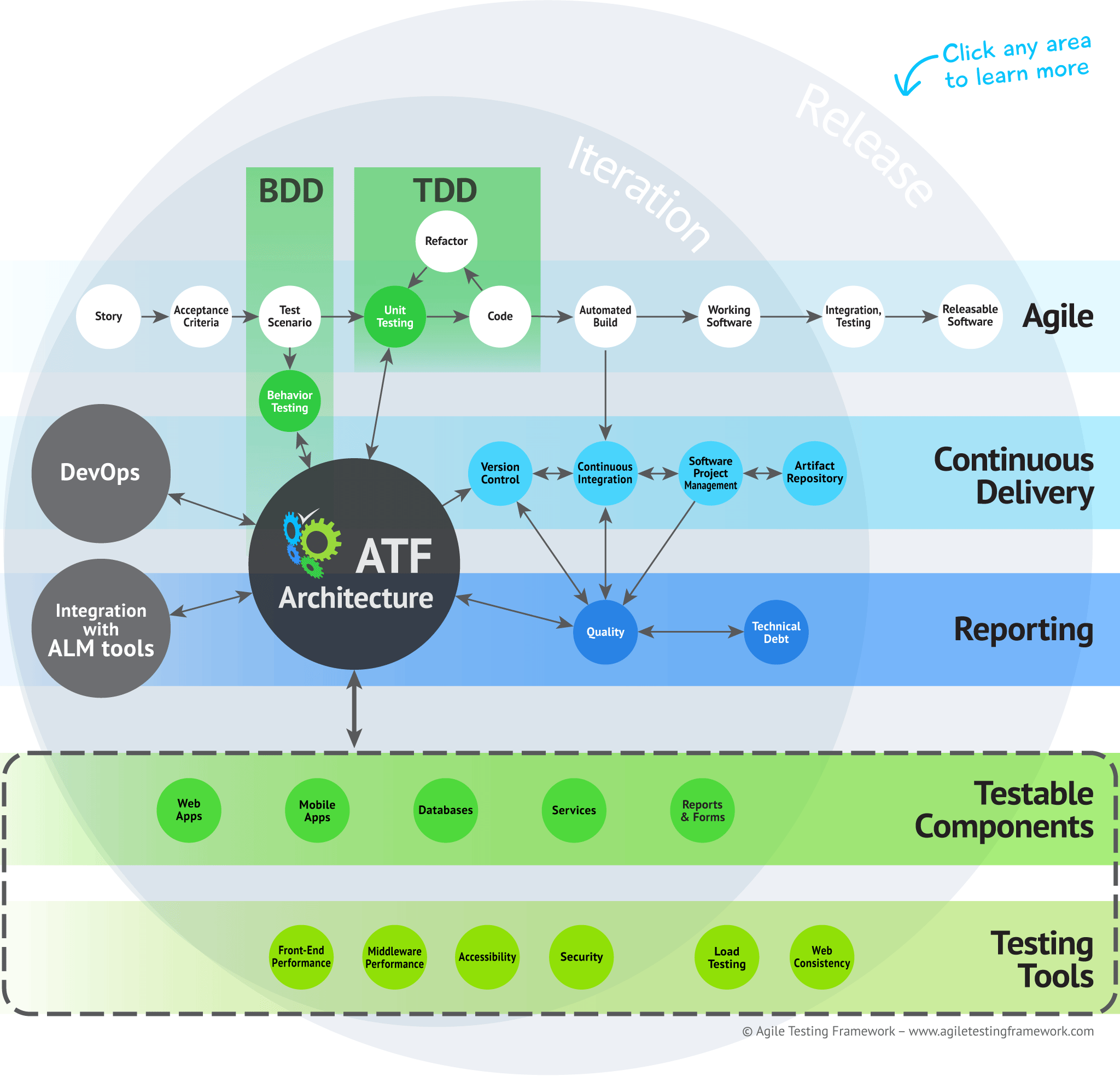Accelerated testing with an Agile automation framework is an approach to software testing that utilizes automation to increase the speed and efficiency of testing, while also embracing the principles of Agile development. An Agile automation framework typically includes a set of tools, processes, and guidelines that enable teams to quickly create, execute, and maintain automated tests.
The key components of an Agile automation framework include:
An Agile automation framework is a set of principles, practices, and tools designed to support the implementation of automation within an Agile software development environment. It aims to integrate automated testing and continuous delivery into the Agile development process, enabling teams to deliver high-quality software at a rapid pace.
Here are the key components and characteristics of an Agile automation framework:

- Agile principles: The framework aligns with the Agile methodology’s core principles, such as iterative development, collaboration, frequent feedback, and adaptability. It emphasizes delivering working software in shorter iterations or sprints.
- Test automation strategy: The framework outlines a comprehensive approach to test automation, including the selection of suitable automation tools, defining automation goals, determining test coverage, and identifying suitable test cases for automation.
- Continuous integration and delivery (CI/CD): The framework integrates with CI/CD practices to ensure that automation scripts are executed and validated continuously throughout the development lifecycle. It enables frequent and reliable releases of software by automating build, test, and deployment processes.
- Test-driven development (TDD): The framework encourages the use of TDD, where tests are written before the corresponding code. Test automation scripts are created to verify the expected behavior of the software, providing immediate feedback to the development team.
- Behavior-driven development (BDD): BDD is another approach supported by the framework, where test scenarios are written in a human-readable format using a domain-specific language. These scenarios serve as executable specifications and facilitate collaboration between stakeholders.
- Modularity and reusability: The framework promotes modular test design and encourages the creation of reusable components or libraries. This allows teams to create maintainable and scalable automation suites that can be easily extended and adapted as the software evolves.
- Collaboration and communication: The framework emphasizes cross-functional collaboration and communication between developers, testers, and other stakeholders. Automation artifacts, such as test cases, test data, and test results, are shared and accessible to all team members.
- Metrics and reporting: The framework provides mechanisms to collect relevant metrics related to test execution, coverage, and overall automation effectiveness. It supports the generation of meaningful reports and dashboards to monitor the progress and quality of the software.
- Continuous improvement: The framework encourages a culture of continuous improvement by regularly reviewing and refining the automation strategy, test design, and development practices. Teams are encouraged to learn from feedback, adapt their approach, and incorporate new tools and techniques.
Overall, an Agile automation framework facilitates the integration of automation into the Agile development process, promoting faster feedback cycles, higher productivity, and improved software quality. It enables teams to deliver value to customers more efficiently while maintaining flexibility and adaptability in an ever-changing software development landscape.
ALSO SEE: The Fundamentals of Scrum Testing


